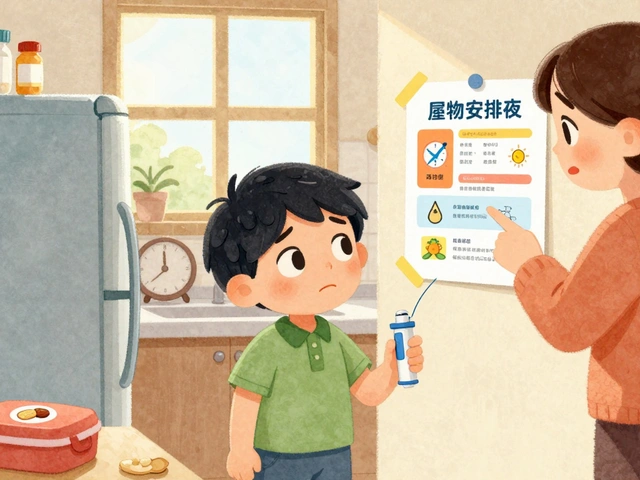Bacterial infections: what to watch for and how to treat them
Bacterial infections happen when harmful bacteria multiply in or on your body. Some are mild and clear up on their own or with a short antibiotic. Others need quick medical care. Know the signs, when to see a clinician, and how to handle antibiotics safely—so you don’t make an infection worse or fuel resistance.
Common bacterial infections and clear signs
Here are frequent culprits and what they often look like. Strep throat: sore throat with fever, swollen tonsils, white patches. Urinary tract infection (UTI): burning when you pee, urgency, cloudy urine. Skin infections like cellulitis: spreading redness, warmth, pain, sometimes pus. Bacterial sinusitis: facial pain, thick nasal discharge lasting more than 10 days. Ear infections: ear pain, reduced hearing, sometimes fever—especially in kids.
Key red flags that need prompt care: high or persistent fever, fast breathing or trouble breathing, severe pain, confusion, very little urination, or symptoms that suddenly get much worse. Babies, older adults, and people with weak immune systems should be seen sooner.
Treatment, resistance, and safe antibiotic use
Antibiotics kill or stop bacteria, but they don’t work on viruses. If your clinician suspects a bacterial infection, they may prescribe antibiotics right away or order a test (throat swab, urine culture, wound culture) to pick the best drug. When you get a prescription: take the full course even if you feel better, don’t save leftovers, and don’t share meds.
Antibiotic resistance happens when bacteria survive treatments and become harder to kill. You cut your risk by using antibiotics only when needed, following the dose and length your doctor gives, and not pressuring clinicians for antibiotics for viral illnesses like colds or most coughs.
If infections keep coming back—recurrent UTIs, repeated sinusitis, or wound infections—ask for cultures and targeted treatment. Narrow-spectrum antibiotics, chosen from a culture result, often work better and cause less harm to your normal bacteria than broad-spectrum drugs.
Want to buy antibiotics online? Be careful. Legitimate pharmacies always require a prescription and show clear contact info and licensing. Avoid sites that sell antibiotics without prescriptions or at extremely low prices. Check shipping rules in your country—importing prescription meds can be illegal or blocked at customs. If you must order online, choose pharmacies with verified credentials and a real pharmacist you can reach.
Prevention is simple and powerful: wash hands, keep wounds clean and covered, cook food to safe temperatures, stay up to date on vaccines like pneumococcal and tetanus, and avoid close contact with sick people when possible. That cuts infections more than any pill.
If you’re unsure whether symptoms are bacterial or viral, call your clinic. A quick check can save a lot of hassle and keep antibiotics working for everyone.
7
Zithromax: What to Know Before Taking Azithromycin Antibiotics
Zithromax (azithromycin) is a popular antibiotic used to treat a broad range of bacterial infections. This article breaks down how it works, what it's commonly prescribed for, possible side effects, real-life tips, and things you simply can’t ignore before taking it. Discover everything you need to make smart decisions and manage your health better.
11
Exploring 7 Zithromax Alternatives for Bacterial Infections in 2024
In 2024, exploring alternatives to Zithromax is crucial for managing bacterial infections effectively. This article discusses seven alternatives, including Augmentin, Doxycycline, and Amoxil, each offering different advantages and tailored uses for specific conditions. By understanding the pros and cons of each, readers can make informed decisions about their treatment options. Emphasis is placed on selecting antibiotics based on individual needs and possible allergic reactions.
Latest Posts
Popular Posts
-
 Acromegaly: Understanding Excess Growth Hormone and Effective Treatment Options
Acromegaly: Understanding Excess Growth Hormone and Effective Treatment Options
-
 Allergy Action Plan: Essential Medications to Carry and When to Use Them
Allergy Action Plan: Essential Medications to Carry and When to Use Them
-
 Over-the-Counter Medication Safety: Hidden Ingredients and Interactions You Can't Afford to Ignore
Over-the-Counter Medication Safety: Hidden Ingredients and Interactions You Can't Afford to Ignore
-
 Pharmacist Recommendations: When to Suggest Authorized Generics
Pharmacist Recommendations: When to Suggest Authorized Generics
-
 How to Keep Medications Safe from Children and Pets at Home
How to Keep Medications Safe from Children and Pets at Home




